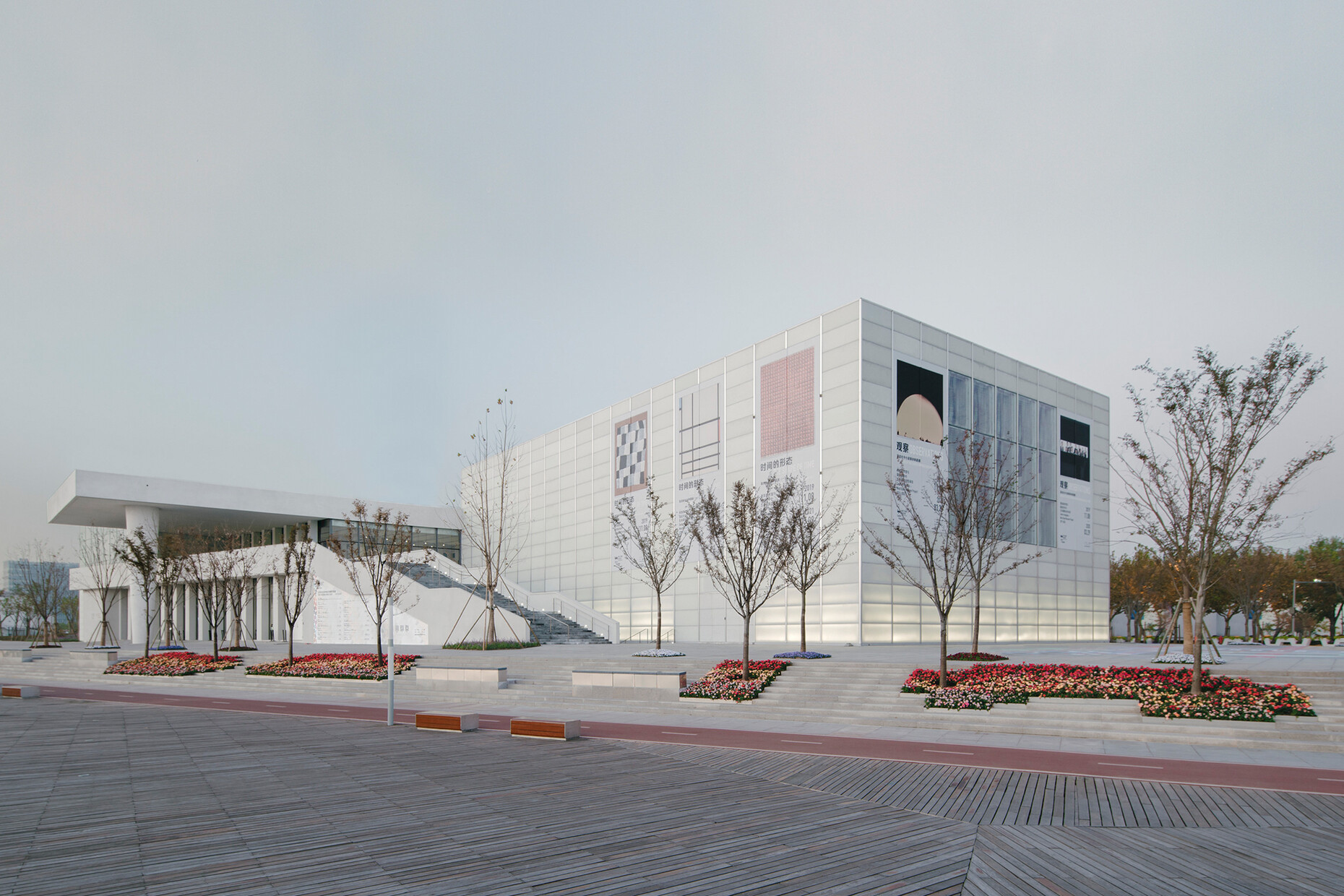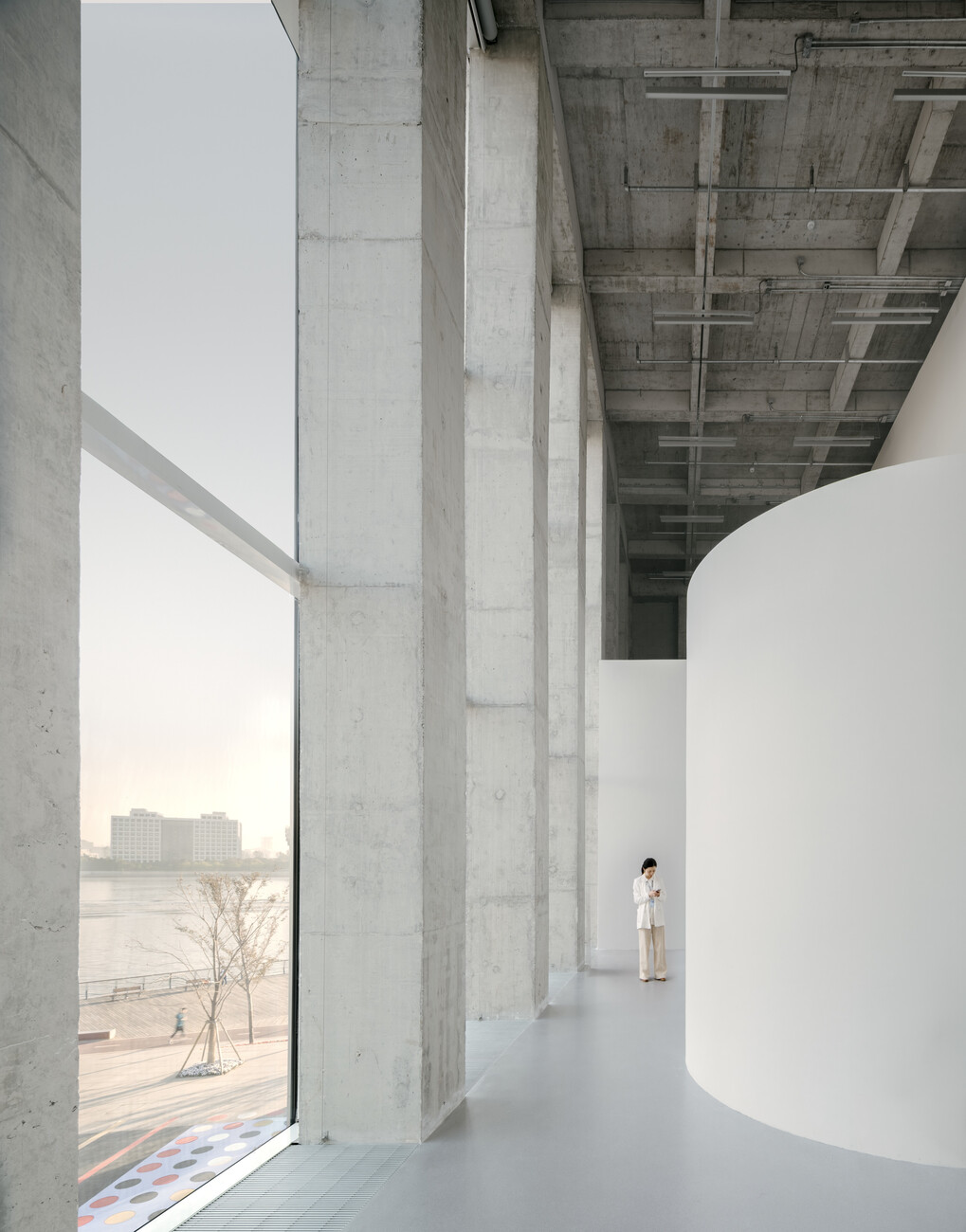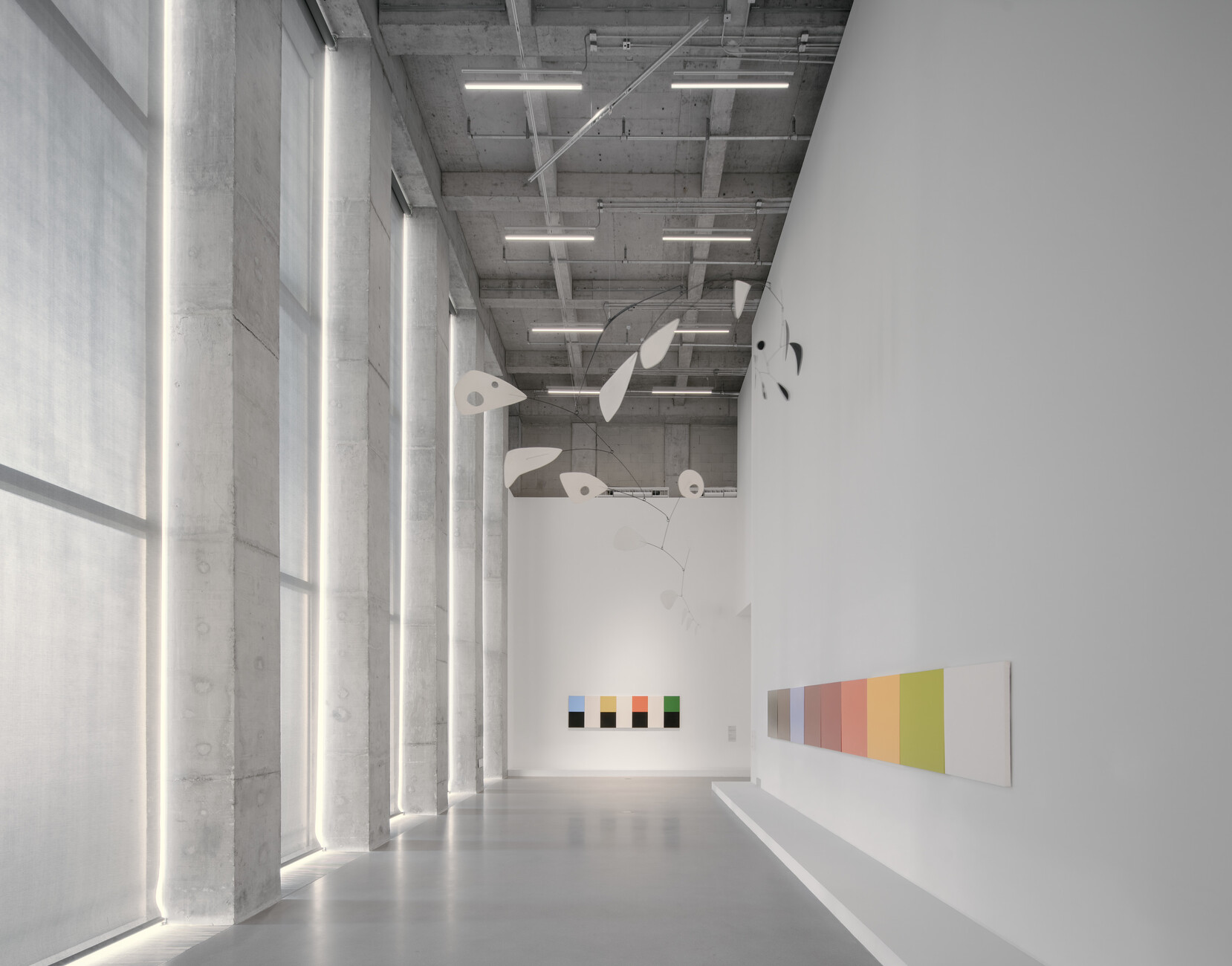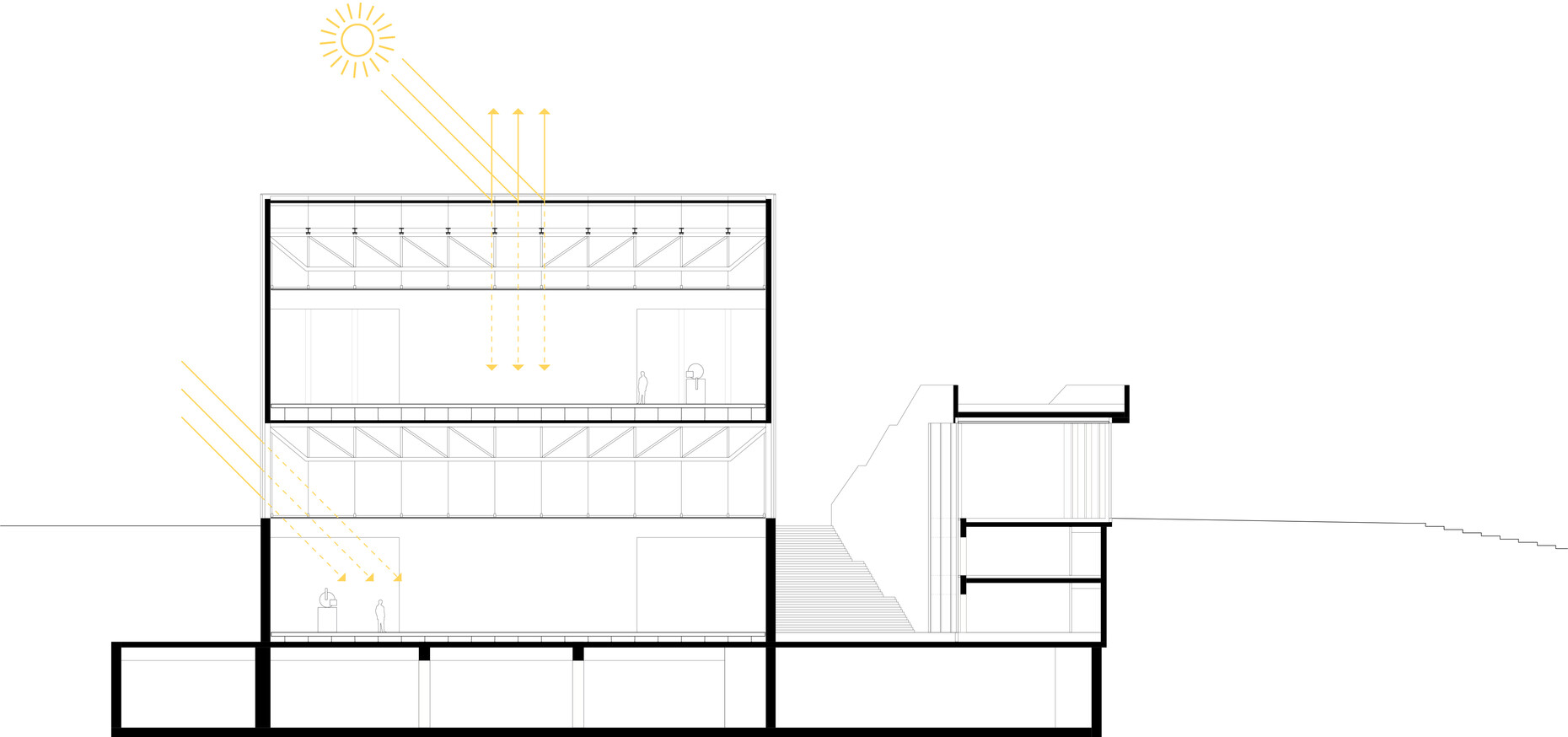A museum for everyone
Shanghai is not only a gigantic metropolis of over 20 million people, but is also one of the world’s most important commercial hubs. During the mid-1980s the city’s prosperity was still based on rapidly expanding industry, but now it is finance, high-tech and the service sector that form the backbone of the local economy. In Shanghai everything can be that little bit extra, little bit bigger and little bit higher: more high-rises, more shopping streets, more city districts. Or more museums and other cultural institutions. Hence countless new cultural attractions are incorporated into the West Bund “masterplan”, according to which a former industrial site is to be redeveloped as a new urban quarter. A museum and cultural strip on the banks of the Huangpu is set to become an important point of reference in the development while linking Xuhui district up to the historical riverside promenade known as the Bund.
Chipperfield Architects were allocated a triangular plot for their assignment. A prominent location in the string of beads that forms this cultural standalone project. The architects opted for three cubes, which rotate like the blades of a windmill around a two-story atrium. All the blocks are the same size and height – and are suitable for hosting all forms of art. Each of the 17-meter-high cubes consists of two levels: On the ground floor there is a multifunctional hall, while above it there is an exhibition space which is illuminated by skylights. Large windows on each front open up the body of the building to the river or the city, depending on the alignment, while the façades consist of recycled glass panels and change in daylight. During the night, the cubes are illuminated by the light from the inside and gleam like matt-polished precious gemstones.
The atrium is smaller than the three wings and offers two entrance options for visitors: One is via an almost monumental staircase from the forecourt to a higher level on which the museum shop is located. The other is via another set of steps that leads to a lower-level courtyard that is set back slightly. Attached to the atrium is a flat, elongated pavilion linked to the forecourt, the front of which is marked by slender pillars. Above the pavilion there is a protruding roof structure, the bulk and weight of which are supported by one sole conical strut at the northern corner of the roof. At first glance you might be inclined to think that the roof is about to topple over, and the architects have been very clever in unsettling the eye in this way. After all, it’s with these sorts of touches that the restrained and readily comprehensible architecture of the building still catches the eye in such a high-profile location.




























